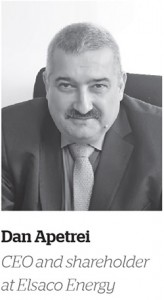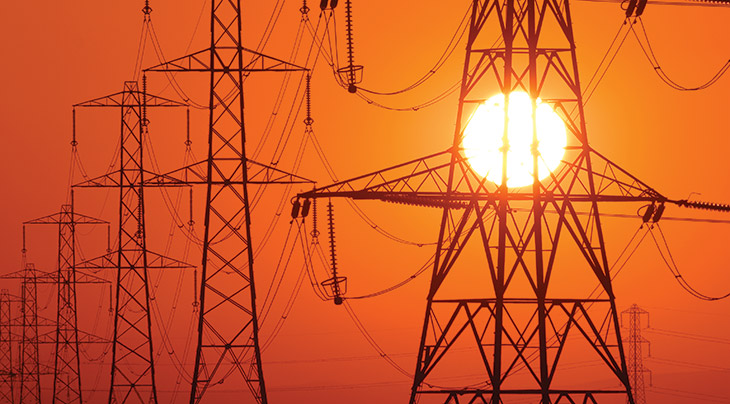The balancing market is a necessity, but also an opportunity for electricity producers, suppliers or users. The central part of this market is represented by the so-called Balance Responsible Parties (BRP), interface companies between any of the licensed players of the market and Transelectrica, operator of the national transmission network. Currently, there are 3-4 BRP of large size that concentrate around 30-50% of Romania’s consumption and production. We talked with Dan Apetrei, CEO and shareholder of Elsaco Energy, one of the new-comers in the balancing market.
 The electricity market is different from others by the fact that operational, technological, production and transmission aspects depend on commercial items and electricity still cannot be efficiently stored. Thus, complex balancing operations are required, so that differences between the electricity amounts committed – in production or consumption – and those actually delivered and consumed, respectively, to be minimum. The last responsible party for maintaining this balance is the National Power Dispatcher, within Transelectrica, which manages the available reserves to compensate for the differences.
The electricity market is different from others by the fact that operational, technological, production and transmission aspects depend on commercial items and electricity still cannot be efficiently stored. Thus, complex balancing operations are required, so that differences between the electricity amounts committed – in production or consumption – and those actually delivered and consumed, respectively, to be minimum. The last responsible party for maintaining this balance is the National Power Dispatcher, within Transelectrica, which manages the available reserves to compensate for the differences.
In order to reduce the number of agents that interact with Transelectrica and to optimize the energy costs required for balancing, there is a total of 114 license holders in the market with the quality of balance responsible party (Transelectrica data from August 1, 2014). Among them, only 25 are responsible for more than a license holder active in the national power system (NPS). If we take into account the attracted members, only around ten balance responsible parties have a relevant number (over 5).
Elsaco Energy and the sister company, Elsaco ESCO, entered this market less than a year ago. Now it ranks the fifth in terms of member number (22). “The number is not an important criterion”, Dan Apetrei, CEO and shareholder of Elsaco Energy, says. “The volumes of electricity intermediated are not really relevant either”, he added, with further explanations. “From the perspective of beneficiaries, savings they make by participating to BRP matter”. Calculations made by Elsaco Energy experts – most of them young PhD students, enthusiastic and studious, Dan Apetrei mentions -, show that a member of this BRP can expect 60 to 80% of the maximum yield that balancing can provide.
Dan Apetrei, former head of the Balancing Market Department of Electrica SA, says that the percentage does not exceed 40 in the case of other BRP. “Our advantage, at Elsaco, is that we joined this market from the field of digital services and we have an excellent expertise in the development of software that optimizes the commercial situation of customers from the perspective of acquisition and consumption of electricity.”
Elsaco Energy presents itself as the only BRP that makes active balancing and is really a “balance RESPONSIBLE party”. The so-called passive balancing consists of the optimization of costs by BRP by aggregating data from its members on quantities of electricity contracted and sending them to Transelectrica.
Unlike other BRP, that still operate based on Excel files sent by e-mail, Elsaco Energy has a webmail interface and an active database, in which BRP members introduce the data. “For me, this system means low costs, because data are uploaded quickly and easily, which reduces the need for operators’, Dan Apetrei says.
“Our clients are, mainly, energy suppliers and producers”, Dan Apetrei explains. Some come with excess of committed quantities (more than they really consumer or less than they produce), others with deficit (the requested volumes are lower than those necessary in reality for consumption or higher in production). Hour after hour, on average, at a BRP level, differences are offset, which reduces the costs of each of BRP members, which remain with lower electricity amounts to purchase additionally (at high prices), respectively lower volumes committed in excess and not used (unjustified expenses). Thus, the impact on NPS is attenuated, by an efficient balancing of production-consumption ratio. In this form, Dan Apetrei continued, a BRP works better if it has more participants, producers or suppliers. “Or at least that’s what the axiom says, in the classical theory. We proved it’s not true”.
Elsaco Energy has introduced the active balancing item by adjustment and is currently the only company that operates in this way in Romania. “When for a time interval we anticipate excess or deficit, we “inject” by adjusting the active elements of BRP the necessary volume to offset this difference. Thus, we bring into the system the lowest imbalance possible, with a positive impact on NPS and with financial benefits for all parties”. Where does this “injection of energy” come from? From contracts that companies in Elsaco group have concluded with partners, producers, suppliers and consumers of energy.
“We are not interested in hunting a large client and fighting for increasingly low margins to keep it in our portfolio”, Dan Apetrei says. The future belongs to companies that can provide to customers real and measurable solutions for reduction in electricity costs.
